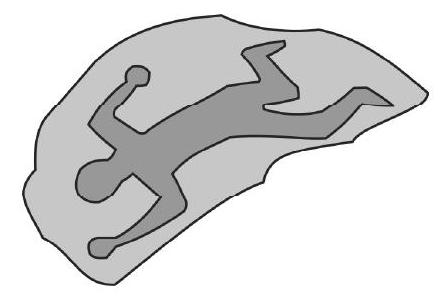366648 Two solid spheres \(A\) and \(B\) made of the same material have radii \({r_A}\) and \(r_{B}\), respectively. Both the spheres are cooled from the same temperature under the conditions valid for Newton's law of cooling. The ratio of the rate of change of temperature \(A\) and \(B\) is
366650
Forensic experts use Newton's law of cooling to find out when victim of crime died. They take the temperature of the body when they find it and by knowing the average temperature of the human body. Initially and measuring the room temperature they can find \(K\) and then \(t\). Suppose that a body was discovered at 12.00 \(PM\) in the midnight in a notel room and its temperature was \(80^\circ F\). The temperature of the atmosphere is \(60^\circ F\) Two hours later the temperature of the body dropped to \(75^\circ F\). Find the time of death. (Assume that average temperature of a living person is \(98^\circ F\) )
366648 Two solid spheres \(A\) and \(B\) made of the same material have radii \({r_A}\) and \(r_{B}\), respectively. Both the spheres are cooled from the same temperature under the conditions valid for Newton's law of cooling. The ratio of the rate of change of temperature \(A\) and \(B\) is
366650
Forensic experts use Newton's law of cooling to find out when victim of crime died. They take the temperature of the body when they find it and by knowing the average temperature of the human body. Initially and measuring the room temperature they can find \(K\) and then \(t\). Suppose that a body was discovered at 12.00 \(PM\) in the midnight in a notel room and its temperature was \(80^\circ F\). The temperature of the atmosphere is \(60^\circ F\) Two hours later the temperature of the body dropped to \(75^\circ F\). Find the time of death. (Assume that average temperature of a living person is \(98^\circ F\) )
366648 Two solid spheres \(A\) and \(B\) made of the same material have radii \({r_A}\) and \(r_{B}\), respectively. Both the spheres are cooled from the same temperature under the conditions valid for Newton's law of cooling. The ratio of the rate of change of temperature \(A\) and \(B\) is
366650
Forensic experts use Newton's law of cooling to find out when victim of crime died. They take the temperature of the body when they find it and by knowing the average temperature of the human body. Initially and measuring the room temperature they can find \(K\) and then \(t\). Suppose that a body was discovered at 12.00 \(PM\) in the midnight in a notel room and its temperature was \(80^\circ F\). The temperature of the atmosphere is \(60^\circ F\) Two hours later the temperature of the body dropped to \(75^\circ F\). Find the time of death. (Assume that average temperature of a living person is \(98^\circ F\) )
366648 Two solid spheres \(A\) and \(B\) made of the same material have radii \({r_A}\) and \(r_{B}\), respectively. Both the spheres are cooled from the same temperature under the conditions valid for Newton's law of cooling. The ratio of the rate of change of temperature \(A\) and \(B\) is
366650
Forensic experts use Newton's law of cooling to find out when victim of crime died. They take the temperature of the body when they find it and by knowing the average temperature of the human body. Initially and measuring the room temperature they can find \(K\) and then \(t\). Suppose that a body was discovered at 12.00 \(PM\) in the midnight in a notel room and its temperature was \(80^\circ F\). The temperature of the atmosphere is \(60^\circ F\) Two hours later the temperature of the body dropped to \(75^\circ F\). Find the time of death. (Assume that average temperature of a living person is \(98^\circ F\) )
